Victorian Comeback II
An invitation for this Saturday and the comeback of an architectural style synonymous with San Francisco.
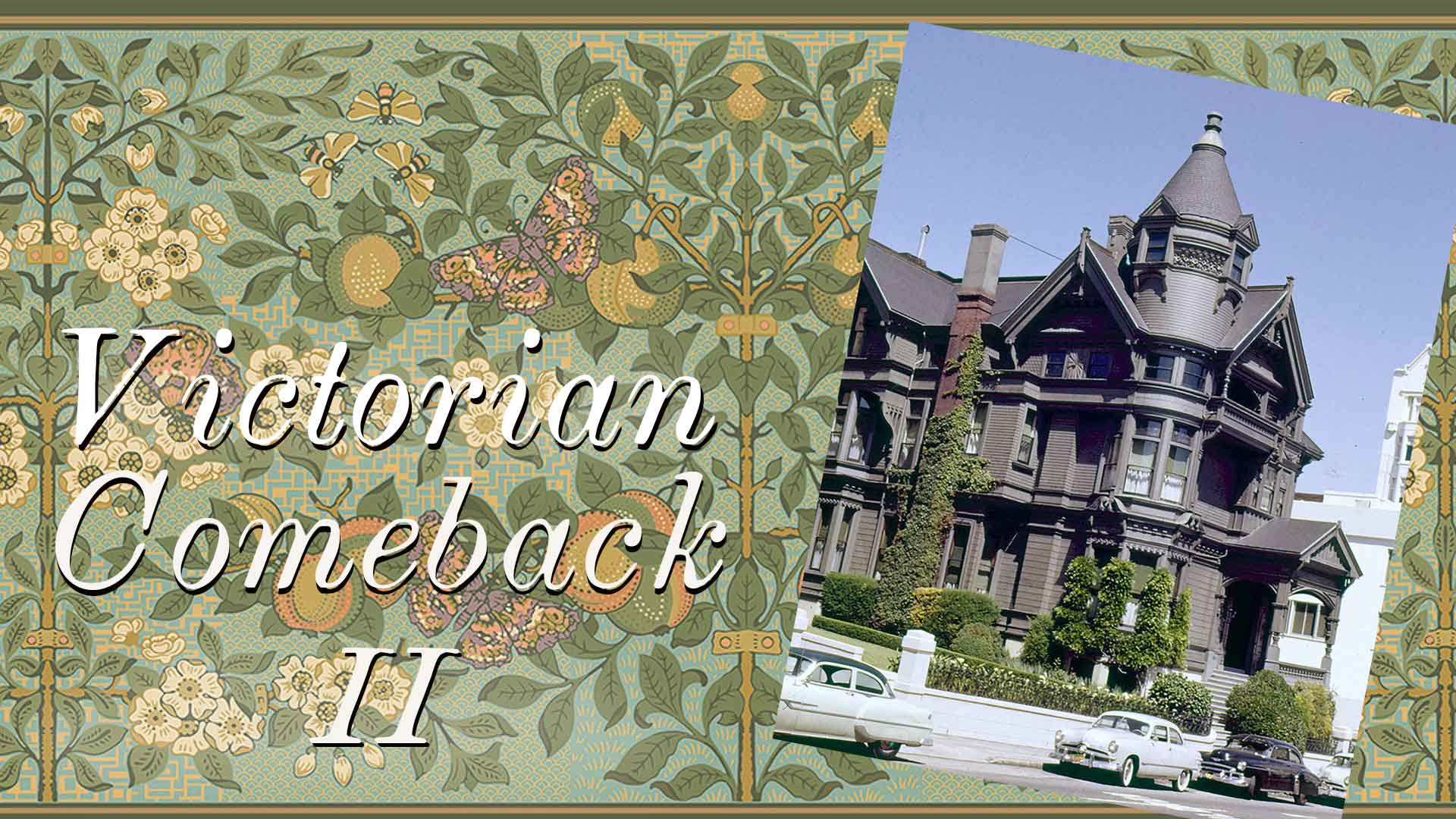
In the 1930s, the WPA’s Federal Writers’ Project put unemployed authors to work on guidebooks. The contributor to the architecture section of California: A Guide to the Golden State, had some opinions on the architectural tastes of the moneyed classes in the late 19th century:
“[W]ealth meant even larger buildings with more and more architectural elements. An epidemic of the Victorian pestilence in aggregated form seized California.”
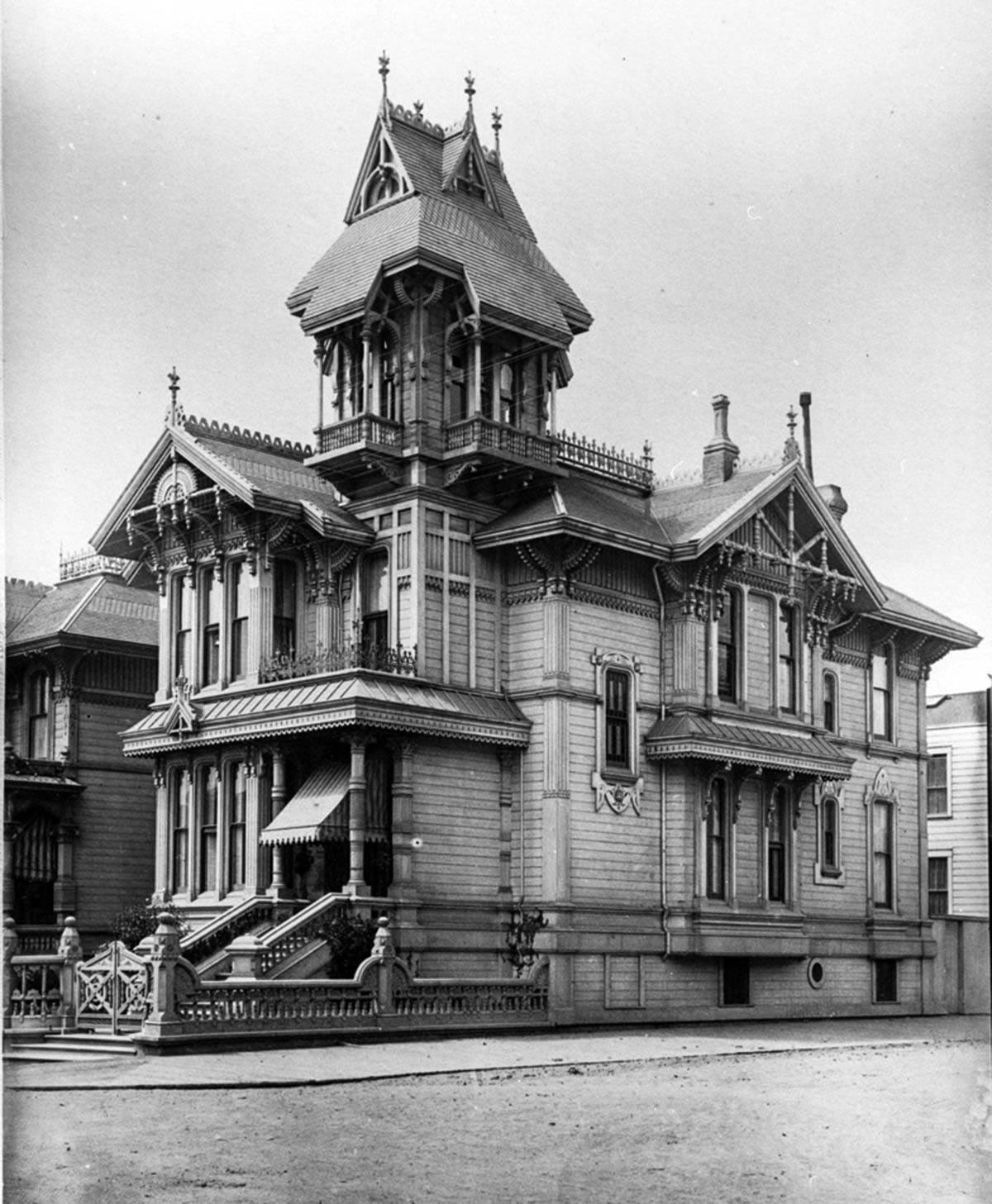
“Whether it was the American version of Victorian Gothic with its pointed arches, battlements, and crestings or the vagaries of the French style of Napoleon III with its mansard roofs and cupolas, bracketed pediments, iron crestings, and the addition of interminable jigsaw work, the results were lamentable and are obvious enough in all the older towns and cities.”

Because of his prejudice, the author saw a benefit in the city’s greatest disaster: “In San Francisco thousands of Victorian horrors were destroyed in the earthquake of 1906; but many remain, their lines sometimes a little softened by shrubs and vines, sometimes stark and bare in their shabby decay.”

Make up your own mind, I say. This Saturday, May 4, from 11 a.m. to 4 p.m., you are invited into one of the city’s finest “Victorian horrors,” a magnificent survivor of the lamentable pestilence the WPA author so abhorred. Ladies and gentlemen, the Haas-Lilienthal House:

The nonprofit I work for, San Francisco Heritage, is opening the doors of our long-time headquarters to host a big book sale. It’s a free twofer: see the inside of an amazing residence and buy a book to support an important organization.
You want to know a bit more about what you are getting into? Well, ok...
Artistic Homes
In the mid 1880s, Mr. William Haas was doing well in his wholesale grocery business and his family was growing. He bought a lot on the 2000 block of Franklin Street and commissioned architect Peter Schmidt to design him a house in the popular Queen Anne style. It was completed in 1886 and shown in a periodical featuring the “Artistic Homes of California.”
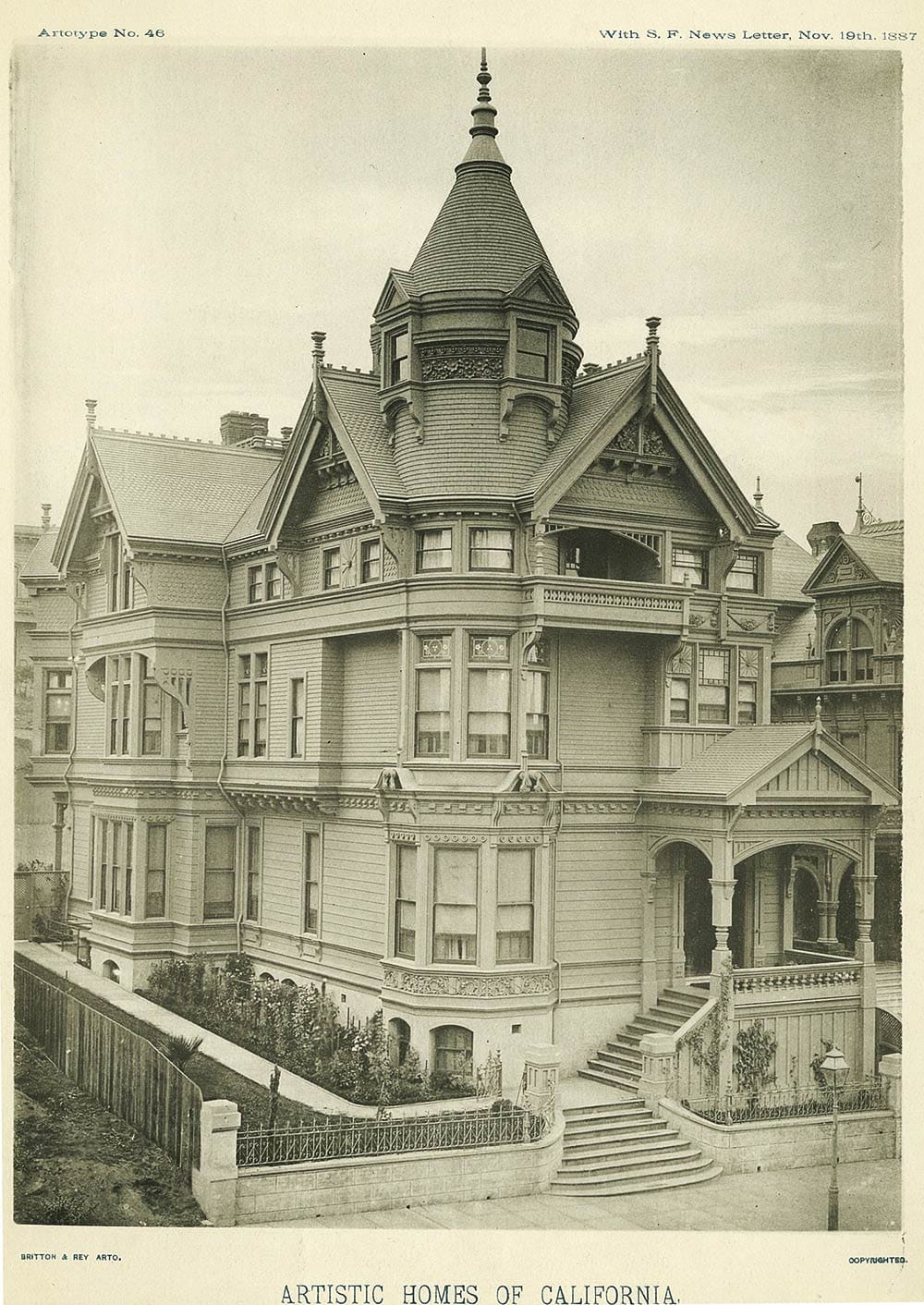
We tend to lump all buildings from the era as just “Victorian,” but Queen Anne was an exuberant break from the more rigidly defined Italianate and Stick-Eastlake styles. Strict verticality and perpendicular lines were busted open with rounded towers, patchworks of shingle patterns, three-dimensional friezes of swirls and garlands and starbursts.

In the late 1800s, the streets sloping up west from Van Ness Avenue were a showcase of handsome homes owned by merchant families like the Haases. True mansions were reserved for Van Ness Avenue, Nob Hill, and large estates down the peninsula. The Haas-Lilienthal House is grand, but it would be just a wing on Charles Crocker’s house on California and Taylor Streets:

Crocker’s house was incinerated during the 1906 earthquake and fire. The hungry flames were finally stopped at Van Ness Avenue, just a block away from the Haas-Lilienthal House.

Gothic Horrors
Tastes has already begun to shift before the earthquake and fire cleared out a big chunk of the city’s building stock. Disdain for the previous era’s “architectural pretensions” was common by the 1910s.
It’s a natural reflex to use architecture in this way. It’s the same with clothing. A new generation seeks to define itself by rejecting the recent past. Excess ornamentation was tossed for simpler lines and romantic styles mimicking foreign lands and the past: Tudor cottages, Mexican adobes, German castles, Colonial plantation houses.
So, Victorians were torn down for apartment buildings in the 1920s. In the 1930s they were “modernized” by stripping off their mill-work and by lathering on stucco and asbestos siding. They were partitioned into low-cost rental units during World War II. They were razed for new expressways and public housing complexes in the “urban renewal” of the 1950s and 1960s.
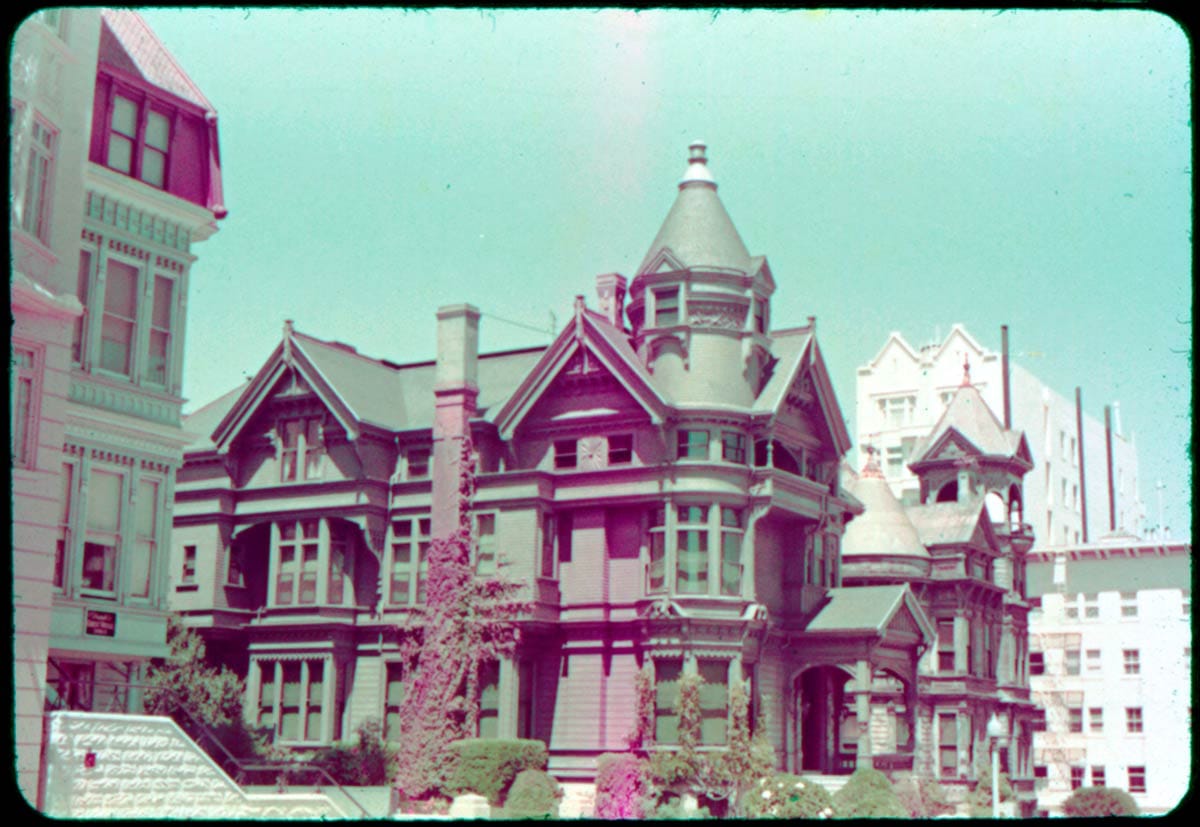
All during this time, as neighboring homes were demolished, new apartment towers blocked views, and quiet Franklin Street became a three-lane expressway, 2007 Franklin Street stayed in the family.
After William Haas died in 1916, his daughter Alice moved back in with her husband Samuel Lilienthal to keep her mother company. She would live there the rest of her life.

When Alice passed in 1972, the family donated the house and a good deal of its furnishings to a new nonprofit organization, San Francisco Heritage. Inside, it looks much as it had for the past century.

Painted Ladies
By the time San Francisco Heritage received the property, attitudes to architecture had shifted once again. In the 1970s, ranch style homes were on the outs. (You know: mass-produced boxes symbolizing conformist suffocation in the cultural deserts which we call suburbs, etc, etc...)
The young avant-garde sought the old city neighborhoods and embraced the craftsmanship of a previous century. Safely removed by a couple of buffer generations, Victorians were rediscovered, cool again, meticulously restored or reinterpreted with garish color choices. Coffee table books and postcards and advertising campaigns celebrated “painted ladies” as icons of San Francisco.

We are still somewhat in that time (even as there has been a predictable re-embrace of “Midcentury Modern” and those ranch homes.)
People (and the real estate market) still value Victorian houses, even if they treat them differently.
Colors no longer trend to the rainbow, but the monochromatic industrial. Facade details melt into desaturated voids of blacks and grays. Interiors are ripped out for open-floor-plan living. Walls, moldings, and wainscoting which do survive are all painted a blinding white. New spiky chandeliers are installed.

Some might say it’s lamentable, even a pestilence.
If you are tired of the blow-outs and the minimalism and the fetishism for an iPhone/Chromebook palette of antiseptic whites and Chromebook grays, you are not alone.
It is time for the Victorian Comeback II. Do one of the wonderful Victorian Alliance of San Francisco house tours. Buy a fern. Tell Marie Kondo what brings you joy is a mantelpiece crammed with gee gaws. Remember that one cannot have enough doilies.
And come take a free walk through the Haas-Lilienthal House this Saturday, May 4, 2024, from 11 to 4. I recommend coming mid-afternoon when the rush will probably be lighter. We can only let so many people in at a time and there are a lot of books.
I’ll probably be out front to greet you.
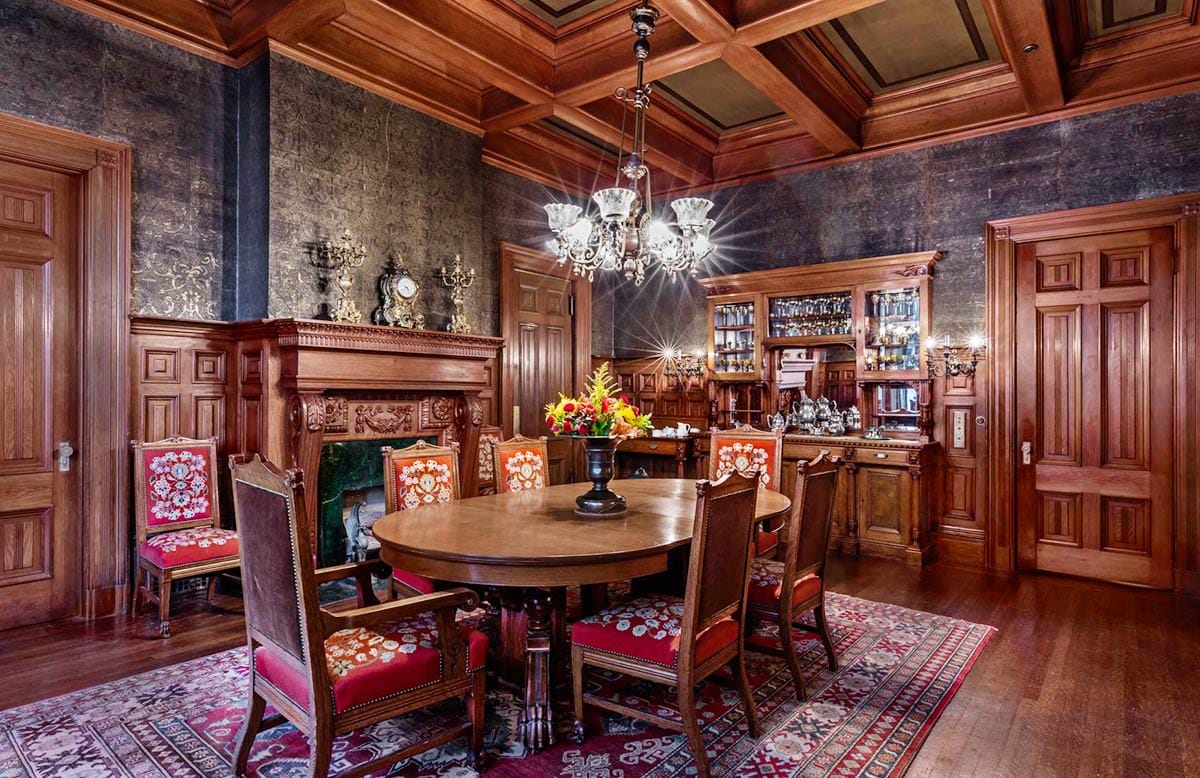
(Can’t make May 4? Docent-led public tours of the house will resume on Saturdays starting May 11. You can reserve your space now!)
Woody Beer and Coffee Fund

Just when I thought my hospitality fund was about to run dry Ed F. (F.O.W.), Linda G. (F.O.W.), Monique D., and Andy D. stepped in to keep the beer and coffee flowing! Is it your turn? Let’s make a date and talk about architecture and the old days and how the kids today don’t know what they’re missing, etc.
(Note to the kids: you’re awesome.)
Sources
California: A Guide to the Golden State (New York: Hastings House, 1939), pg. 171. I have a bad feeling the architecture section was written by poet Kenneth Rexroth. Say it ain’t so, Kenny.
“Artistic Homes of California, No. 46,” San Francisco News Letter, November 19, 1887.
“In the Gay Nineties,” San Francisco Water, January 1928, pg. 13.

